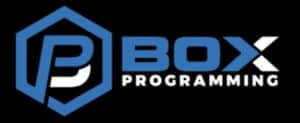As a society with information at our fingertips at any given point in the day, you can follow just about any of your favorite strength coaches and trainers on social media and get bombarded by knowledge bombs every minute, on the minute, if you please.
This can be a blessing and a curse, though, as the inexperienced athlete/coach can easily be overwhelmed by the number of variations, and simply not know which to choose once they get to the gym or which variations to have their clients use.
On the other end of the spectrum, you’ll have athletes/coaches that simply get stuck performing/programming what they’re good at and fail to venture out into the unknown.
If you started training pre-instafacebook days then you had no other choice but to spend time reading, researching, and experimenting in the trenches (I still think practical knowledge is one of the most valuable tools to becoming a successful coach or trainer.)
Needless to say, I plan on sharing with you my favorite squat variations that we use in our individual programming.
Front Box Squat
The Front Box Squat is a variation that I love to test every 12 weeks varying box heights/accommodating resistance. This variation if perfect for those that are lacking quadriceps strength and may not have a great front rack position.
Your Front Box Squat and Front Squat numbers will not be comparable – usually 10-15% less for the former. These can also be used for dynamic effort work quite effectively.
Zercher Box Squat
The box squat is a favorite for both max effort & dynamic effort work, but in a max effort setting I tend to favor the Zercher or front box squat variation. The reason is simple – less spinal compression.
If you’re like me and have already one too many lower-back issues, then this is a great variation to train the box squat heavy with less risk of injuring your back.
This variation will likely have a higher loading capacity than the Front Squat.
1 1/4 Front or Back Squat
I think it’s safe to say there aren’t many people that don’t want to add size to their legs and we know that if we add time-under-tension, we can effectively increase the length of our sets, thus inducing muscular hypertrophy. Adding a 1/4 rep to each rep will increase the length of each set as well as reinforce proper positioning with our squat pattern.
Depending on your goals, I’d recommend performing these for sets that last somewhere around 30-40s in length. For the general population, this variation can add much-needed hypertrophy but also reinforce positioning.
The Anderson Squat
The Anderson Squat and its variations are some of my favorite squats. Using concentric movements is simply another tool in your toolbox that can be done in a variety of ways such as different heights, different bars, with accommodating resistance. Depending on your starting point height, working a partial range of motion movements provides the neurological advantage of allowing us to use loads that are above our current 1-rep max.
The advantage of this is allowing us to build confidence with weights that we aren’t accustomed to handling. The Anderson squat is also great to build absolute strength – We can specifically target our “mini-maxes” or our sticking points and vary joint angles that may be less favorable based on individual anthropometrics.
Moreover, improving RFD is another advantage is important and by starting from a disadvantage (bottom/dead-stop) we are forced to utilize higher-threshold motor-units and fast!
Lastly, strategically training our ability to develop tension for max effort work requires the ability to create tension. Often times this aspect of training can be forgotten about, but with concentric movements, we are forced to develop tension prior to initiating our movement because we are essentially starting from a disadvantage – we are also unable to use the stretch reflex.
We favor the Front & Back Squat variations (with a safety squat bar works very well) as well as the Zercher Variation.
Wide Stance Box Squat
I can’t credit Louie Simmons enough for what he has provided to the strength training world and the popularization of the Box Squat is largely due to Westside Barbell and Louie Simmons. The Wide Stance Box Squat is definitely a game-changer for every athlete I’ve used them with. There are a few reasons.
1) The box squat breaks up the phases of the lift, forcing you to use less loading (less spinal compression) and not use the stretch reflex as many lifters become accustomed to using.
2) The wide stance puts a great deal of stress on the hips, hamstrings, and adductors, where most trainees tend to be lacking.
Additionally, if you have knee issues, the box squat is a great alternative, as there is less shear force on the knees. Lastly, in a group setting where ability varies, the box squat can double as a teaching tool and reinforce the proper hip-hinge pattern. Overall, the box squat is arguably the biggest-bang-for-buck squat in my opinion.
Squats to pins
These may be one of the most challenging variations of the squat you haven’t tried. Pausing on pins releases elastic energy accumulated during the eccentric phase of the lift more so than a Box Squat as your body is completed unloaded once the bar meets the pins.
These can be done with either the front squat, back squat, or Zercher squat and are done for Max Effort or repetition effort work. Stick with rep ranges inside of 5 reps to avoid excessive amounts of movement breakdown. Add band tension and your core will be lit.
Paused Squats
If any of you have seen Dimitri Klokov perform his infamous paused squats with an unGodly amount of weight then you can probably guess these are pretty effective for developing absolute strength!
The great thing is that you can vary the length of your pause and where you pause, and how many pauses you add through eccentric or concentric range of motion to add new variations to your mix.
Paused squats will help reinforce good positioning as well as additional time under tension. Win-win.
Landmine Squat
Unlike the traditional Goblet Squat, the landmine variation changes the strength curve and actually turns the squat into a more hip-dominant version. Our society is plagued by lower back disorders which aren’t surprising seeing the daily postures we’re in so extra work for the posterior chain is always a plus.
And we are an anterior-chain dominant society so allowing the squat to remain more demanding on the musculature of the glutes and hamstrings is key to long term gains.
This isn’t a movement for the faint of heart either with loading capability that will challenge even the most seasoned meathead. My go-to for programming is building to a heavy 8-10 rep set over the course of 5-6 sets.
Cluster Set Squats
Cluster sets aren’t exactly a different variation of the back or front squat, but they were simply too effective for me not to mention. Cluster sets work incredibly well when done with squats providing brief bouts (10-20s) of intra-set rest to allow trainees to work with heavier loads than they’d normally be able to work with for a straight-set.
For example, a cluster set for the Front Squat may look something like this: 5 x 2.2.2 (15s). Rest 3-4:00. This simply means you’d perform a double, re-rack the weight, rest 15s, and then perform another double until you’ve done 3, cluster sets of 2 reps.
After all 3 sets, you’d rest anywhere from 3-4:00 minutes, depending on the load you’re using. For beginner athletes, cluster sets allow us to reinforce better movement patterns because we are able to rest between repetitions making the chance of performing less than optimal repetitions less likely.
Closing
Hopefully, this list helps you add some new variety to your programming. I’d recommend experimenting with all variations before programming them for your clients. Nothing here requires any special equipment that cannot be found at a typical box so give it go!

